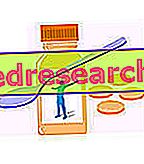
What is Noxafil?
Noxafil is an oral suspension containing the active substance posaconazole (40 mg / ml).
What is Noxafil used for?
Noxafil is an antifungal drug. It is indicated for use in the treatment of patients suffering from the following infections, in case of intolerance to other antifungal drugs (amphotericin B, itraconazole or fluconazole) or in the case where no improvements were found after a minimum treatment of 7 days with a other antifungal therapy:
• invasive aspergillosis (a type of infection due to the Aspergillus fungus);
• fusariosis (another type of infection due to the Fusarium fungus);
• chromoblastomycosis and mycetoma (long-term fungal infections of the skin and soft tissues, usually caused by fungal spores that infect wounds through thorns or splinters);
• coccidioidomycosis (a fungal infection of the lungs contracted by breathing in the spores of the fungus).
Noxafil is also used to treat patients with oropharyngeal candidiasis or "thrush", a type of mouth and throat infection due to the Candida fungus, in patients who have not been treated previously for this disease. Noxafil is used in cases of severe disease or in immunocompromised patients (ie with a weakened immune system).
It can be used to prevent invasive fungal infections in patients whose immune system is weakened because they have undergone chemotherapy (due to the presence of cancer cells in the blood or bone marrow) or to a hematopoietic stem cell transplant (cells in able to generate red blood cells) and that they are taking high doses of immunosuppressive drugs.
The medicine can only be obtained with a prescription.
How is Noxafil used?
Treatment with Noxafil should be started by a doctor experienced in treating fungal infections or treating patients at high risk for invasive fungal infections.
In the treatment of fungal infections (with the exception of candidiasis) Noxafil should be administered at a dose of 400 mg (10 ml) twice a day or at a dose of 200 mg (5 ml) four times a day in patients who do not tolerate food. The duration of therapy depends on the severity of the disease and the patient's response. For the treatment of candidiasis, Noxafil must be administered to one
initial dose (first day) of 200 mg (5 ml) and, subsequently, of 100 mg (2.5 ml) once a day for 13 days.
In the prevention of invasive fungal infections, Noxafil should be administered at a dose of 200 mg (5 ml) three times a day. The duration of therapy depends on the patient's condition.
Noxafil should be taken with meals or with a nutritional supplement. The oral suspension must be shaken well before use.
How does Noxafil work?
The active substance in Noxafil, posaconazole, is an antifungal medicine (antifungal) belonging to the group of triazole antifungals. It works by preventing the formation of ergosterol, an important constituent of the cell walls of fungi. Without ergosterol the fungus dies and can no longer spread. The Summary of Product Characteristics (also included with EPAR) includes the list of fungi for which Noxafil is active.
What studies have been carried out on Noxafil?
Noxafil has been studied in 238 patients with invasive fungal infections who had not responded to traditional antifungal therapy. The study involved 107 patients with aspergillosis, 18 patients with fusariosis, 11 with chromoblastomycosis or mycetoma and 16 with coccidioidomycosis. The results obtained with Noxafil were compared with those from 218 patients treated with other antifungal drugs.
Noxafil has also been studied in the treatment of 350 seropositive patients with oropharyngeal candidiasis, comparing their efficacy with that of fluconazole. In all the studies the main measure of effectiveness was the number of patients with a partial or complete response to therapy.
In the prevention of invasive fungal infections the efficacy of Noxafil was examined in 600 patients who underwent stem cell transplantation, using fluoconazole as a comparator, and in 602 patients with cancer cells in the blood or bone marrow, using as comparative drugs fluconazole or itraconazole. Efficacy was evaluated considering the number of patients who developed an invasive fungal infection, both demonstrated and probable, during the studies.
What benefit has Noxafil shown during the studies?
In invasive aspergillosis, a positive response was found at the end of therapy in 42% of the patients who took Noxafil compared to 26% in the control group. Noxafil was also effective in 11 of the 24 subjects with proven or presumed fusariosis, in 9 of 11 patients with chromoblastomycosis or mycetoma, and in 11 of 16 patients with coccidioidomycosis.
In the treatment of oropharyngeal candidiasis Noxafil was as effective as fluconazole. After 14 days of treatment, both drugs were effective in treating or improving about 92% of patients.
In prevention studies, Noxafil was as effective as fluconazole in stem cell transplant patients: 5% of the subjects in the Noxafil group and 9% of the subjects in the control group developed infection. The drug was more effective than fluconazole or itraconazole in cancer patients: 2% of patients treated with Noxafil reported an infection compared to 8% of the control group.
What is the risk associated with Noxafil?
The most frequently reported unwanted infections are nausea (6%) and headache (6%). Other side effects (found in a number of patients between 1 and 10 out of 100) are neutropenia (decrease in the number of white blood cells), electrolyte imbalance, anorexia, dizziness, paresthesia (pins and needles), drowsiness, vomiting, abdominal pain, diarrhea, dyspepsia (indigestion)), dry mouth, flatulence, signs of liver damage in the blood, skin rashes, asthenia (weakness), fatigue and pyrexia (fever). For the full list of all side effects reported with Noxafil, see the Package Leaflet.
Noxafil must not be used in people who may be hypersensitive (allergic) to posaconazole or any of the other substances. Noxafil should not be used in patients who are treated with any of the following drugs:
• ergotamine or dehydroergotamine (used in the treatment of migraine);
• terfenadine, astemizole (used to treat allergies);
• cisapride (used to treat stomach problems);
• pimozide (used to treat mental illness);
• quinidine (used to treat heart rhythm abnormalities);
• halofantrine (used to treat malaria);
• simvastatin, lovastatin or atorvastatin (used to lower the cholesterol level).
Finally, precaution should be used in the use of Noxafil in patients who are simultaneously taking other medications. For more details, see the package leaflet.
Why has Noxafil been approved?
The Committee for Medicinal Products for Human Use (CHMP) concluded that the efficacy of Noxafil in fungal infections refractory to other antifungal drugs has been demonstrated, although the main study was conducted without a control group. The committee decided that the benefits of Noxafil outweigh the risks in the treatment of invasive aspergillosis, fusariosis, coccidioidomycosis, chromoblastomycosis and mycetoma in patients who do not tolerate other antifungal drugs or who have not reported improvements after a minimum 7-day treatment. He also decided that the efficacy of Noxafil has been demonstrated as a first-line therapy of oropharyngeal candidiasis and in the prophylaxis of invasive fungal infections in patients undergoing chemotherapy for acute myeloid leukemia (AML) or myelodysplastic syndromes (MSD) and in patients undergoing hematopoietic stem cell transplantation (HSCT) in therapy with high doses of immunosuppressants for transplant disease to the host. The CHMP therefore recommended that it be given marketing authorization.
More information on Noxafil
On 25 October 2005, the European Commission issued a marketing authorization valid for Noxafil to SP Europe, valid throughout the European Union.
For the full version of the evaluation (EPAR) of Noxafil, click here.
Last update of this summary: 11-2006.



